- Daily & Weekly newsletters
- Buy & download The Bulletin
- Comment on our articles
Art x Gender: Belgium’s Royal Museums of Fine Arts deconstructs gender stereotypes in new art trail
Belgium’s venerable institution the Royal Museums of Fine Arts turns it attention to the question of gender stereotypes in a new display at the Old Masters Museum in Brussels.
Art x Gender is a critical focus of the museum’s extensive collections with more than 70 works on show until 19 April. Dating from the 16th to the 20th century, they challenge pre-conceived perceptions of how men and women are portrayed in art.
The exhibition is divided into 16 themes, ranging from masculinity and male-female couple norms to the feminisation of pink, motherhood and the objectification of female bodies through the male gaze.
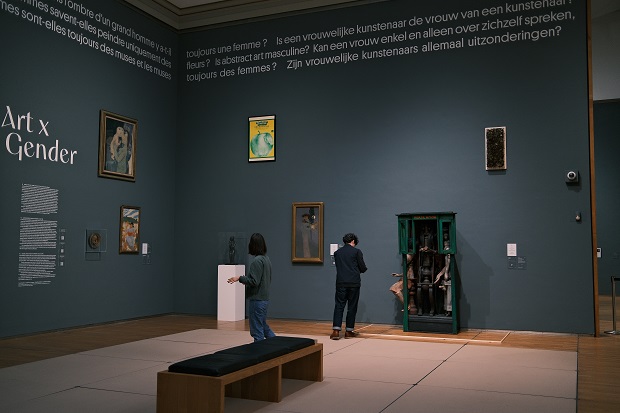
In addition to a dedicated gallery space containing around 30 works, a guided trail threads through the museum’s hallowed halls, highlighting permanent pieces from the collections. The aim throughout is to encourage visitors to not only question gender norms but their own perspective on art.
This new initiative is the result of a collaboration between the federal institution and Belgian universities and cultural partners; an academic study at the heart of its mediation services that aims to cast a critical light on societal issues.
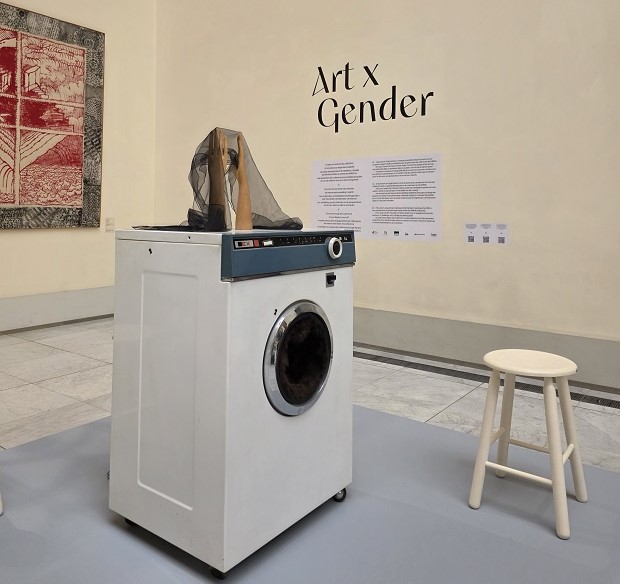
After walking through the museum’s lofty entrance hall past monumental paintings showcasing the nation’s artistic heritage, visitors are greeted by a rather incongruous display that heralds the start of the trail. French artist Olga Morana’s 1974 conceptual installation Délie consists of a retro washing machine topped by two wooden mannequin hands draped in a black veil. It stands between two small white stools that represent lovers. Two hearts fill the machine’s fur-lined drum as an additional cryptic and provocative element; the intriguing ensemble a witty comment on the mechanics of desire from a woman’s perspective.
The route continues up grand stairs to the first floor where an 18th century statue of Hercules by Laurent Delvaux is positioned overlooking the cavernous foyer below. This embodiment of the male hero is crouched inwards, his obvious frailty contrasting with his sinewy musculature.
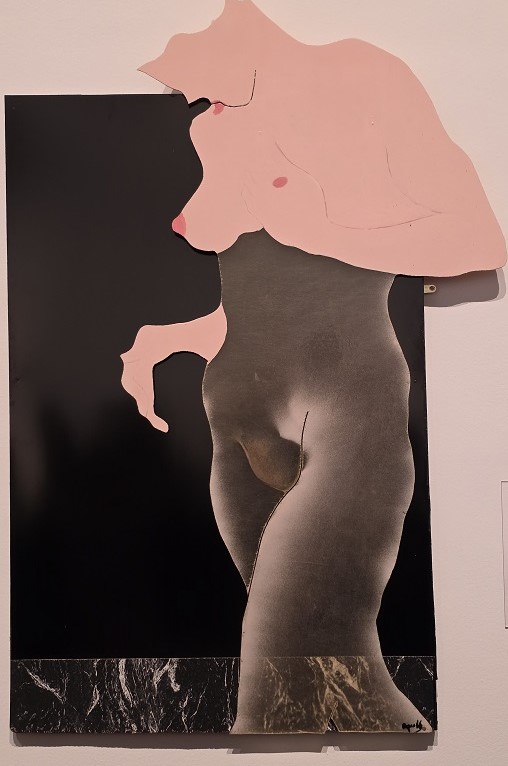
Contradiction is also at the heart of Evelyn Axell’s striking The Egocentric 2 (pictured above) a reinterpretation of Magritte’s Le Galet. While the Surrealist master sensually portrays his wife Georgette, the Namur-born pop artist transforms her mentor’s portrait into a powerful figure that is centred on her own pleasure.
The centrepiece of the trail is Room 66, a high-ceilinged gallery that features a frieze of text posing pertinent questions of the public as well as artists, such as “In art, do men produce while women reproduce”.

As poster image for the exhibition, Roger Raveel’s colourful Human Couple (1968-1975), forms a centrepiece, flanked by Lucas Cranach the Elder’s Adam and Eve. The Belgian artist who blended reality and fiction depicts a void female figure, while the German Renaissance painter explores the dual erotic moralising iconography of the most famous couple in the Western art world.
The sometimes seemingly disconsonant groupings provoke reactionary and occasionally emotional dialogues. This is particularly true of a display exploring the question of consent and the sexualisation of the female body in art. Wittevrongel’s hyperrealistic Torse, Louis Gallait’s highly ambiguous La Robe de noces and the Renaissance depiction of Lucretia after suffering rape, are an arresting sight. The portraits were purposely hung so that the women’s breasts were at eye level (pictured below).
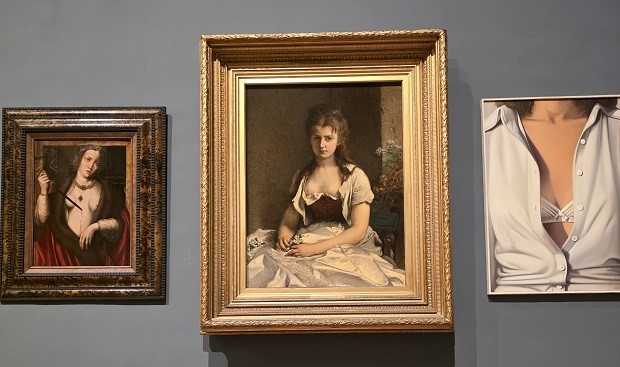
For curators Géraldine Barbery and Audrey Lasserre, the challenge was not only in creating pertinent juxtapositions, it was whittling down the selection of works on display from an initial long list of 400.
“We chose works that were singular and there had to be a dialogue created by showing them in duo or trio groupings, either a shock or a surprise,” reveals Lasserre, a researcher at UCLouvain. “We never gave priority to a particular period; in contrast we sometimes favoured older works, such as by Cranach, for the diversity they brought.”
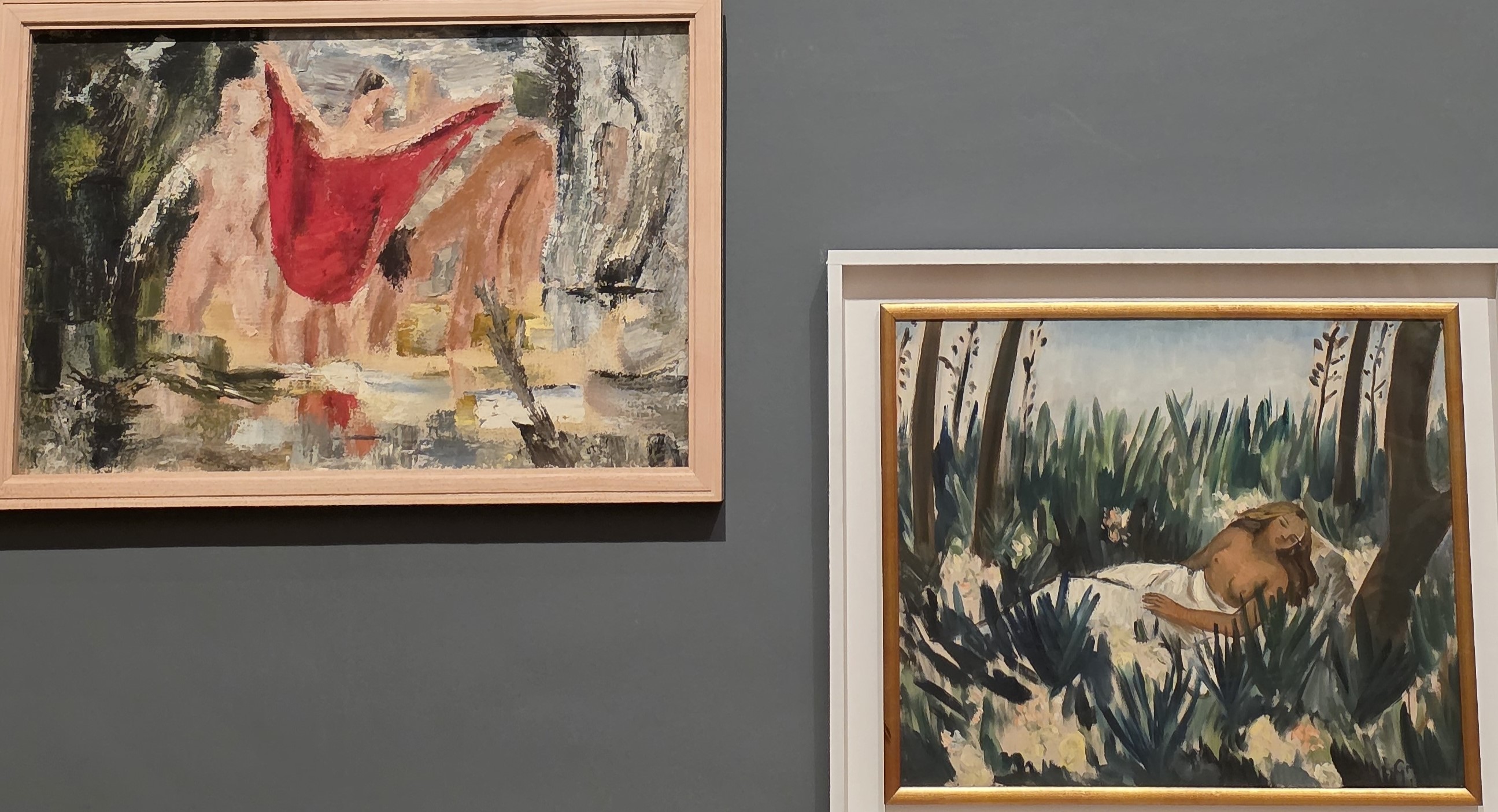
They also consciously picked works for their subject matter and contribution to the project even when they were in a neglected state. This meant dedicating budget to either their full restoration, including Ukrainian artist Anna Staritsky’s Baigneuses (pictured above left), or the cleaning of Jane Graverol’s Les Hautes Herbes (pictured above right). It also enabled these fine paintings to finally go on show to the public.
After previous reflections on war and colonialism, this new focus on gender stereotypes is more than overdue, recognises Lasserre. “We cannot consider the history of art without taking into consideration women, or avoid certain themes because a female artist could not always treat a subject in the same way as a man.”
For Géraldine Barbery, “Gender stereotypes are based on the idea that certain behaviours, or physical and psychological traits, are “natural” and innate.” Although this binary perspective over time results in “norms”, art “can also serve as a space of protest, subversion, or even revolution,” she adds.
If each work is labelled and adorned with a QR code for additional information and visitors equipped with a brochure, they are advised to take advantage of the tours available. A team of 20 guides has been specially trained for the exhibition. Meanwhile, the academic study of stereotypes continues in ongoing mediation work.
A programme of talks and events includes a ‘Special Day’ on 23 November that features performances, a poetry trail and a guided tour.
Art x Gender
Until 19 April
Old Masters Museum
Rue de la Régence 3
Brussels
Photos: (main image) ©MRBAB KMSKB/Clément SIMON; MRBAB KMSKB/Clément SIMON ; Délie by Olga Morana ©Sarah Crew; The Egocentric 2 by Evelyn Axell ©Sarah Crew; ©MRBAB KMSKB/Clément SIMON; ©Sarah Crew;



















